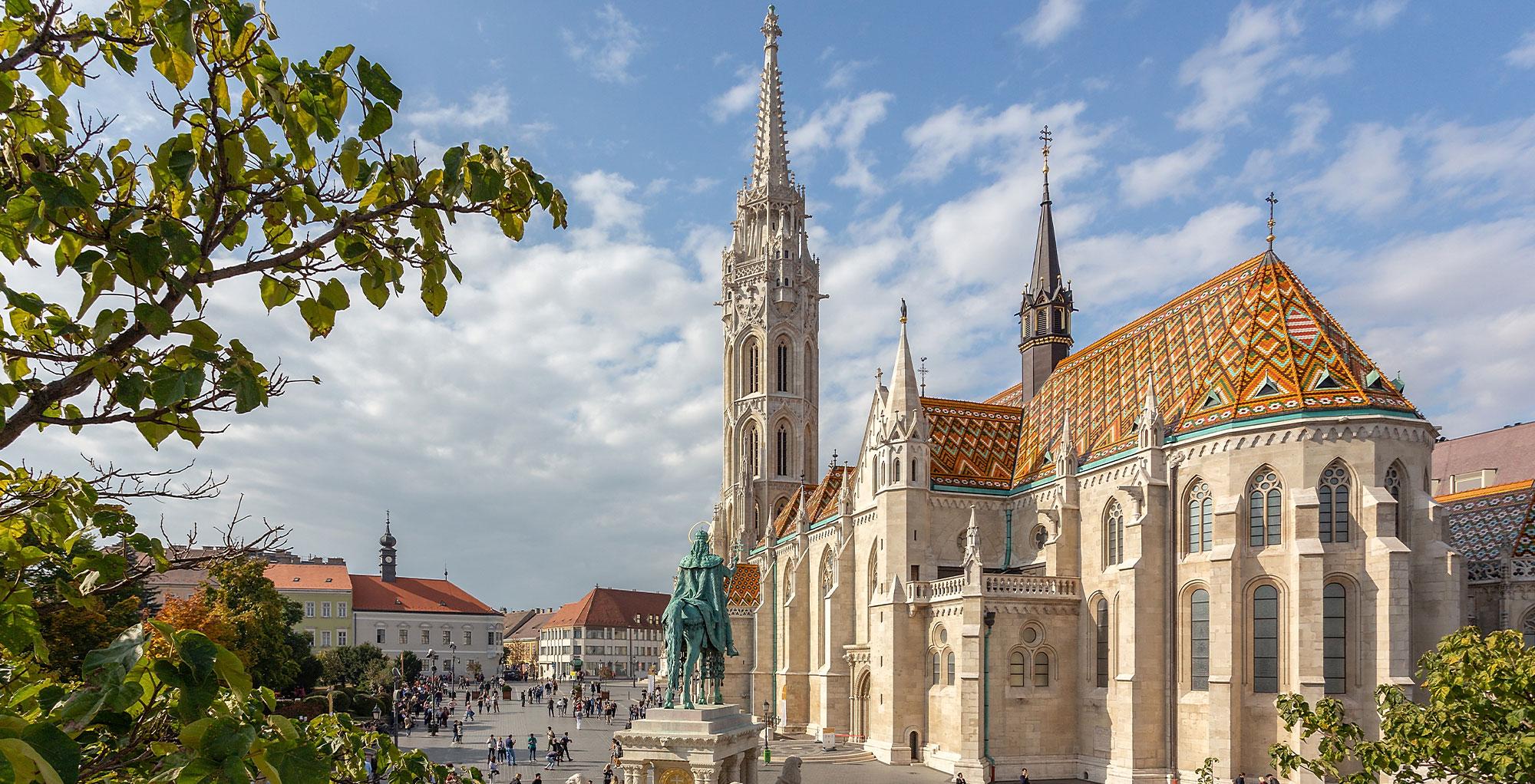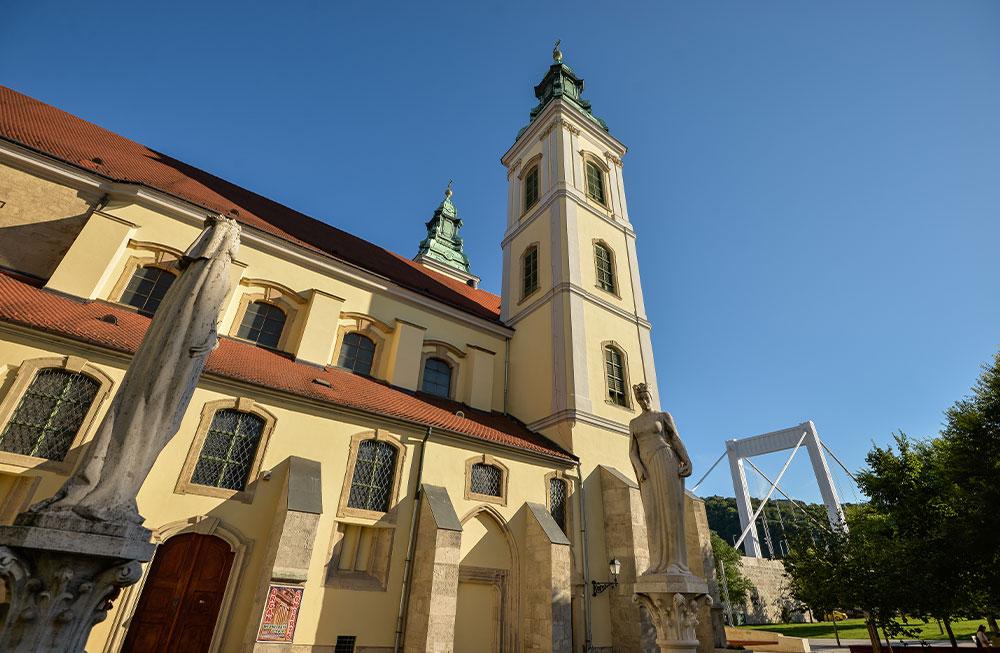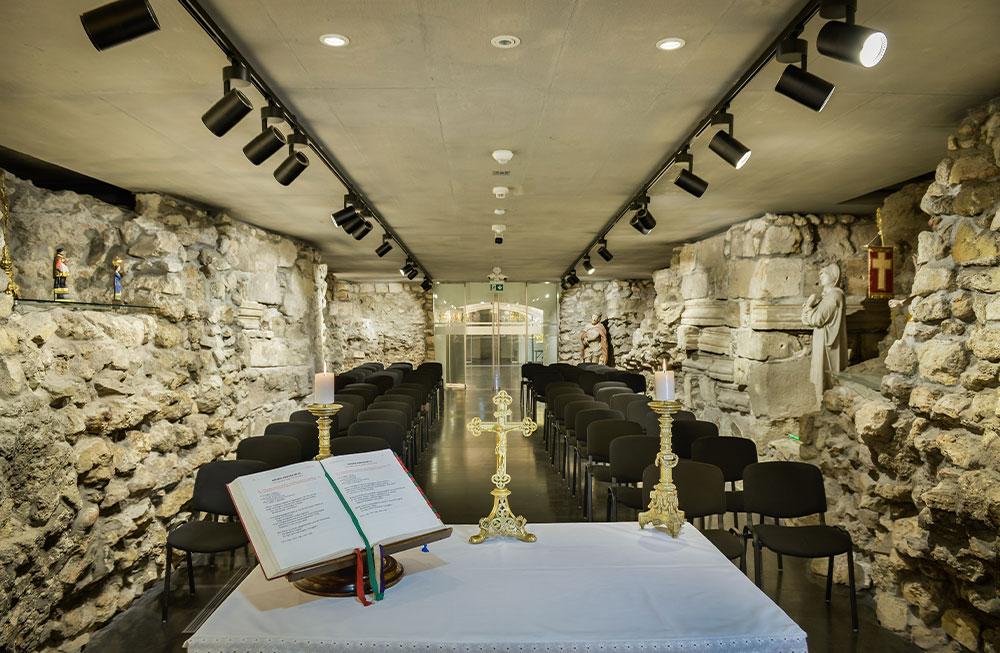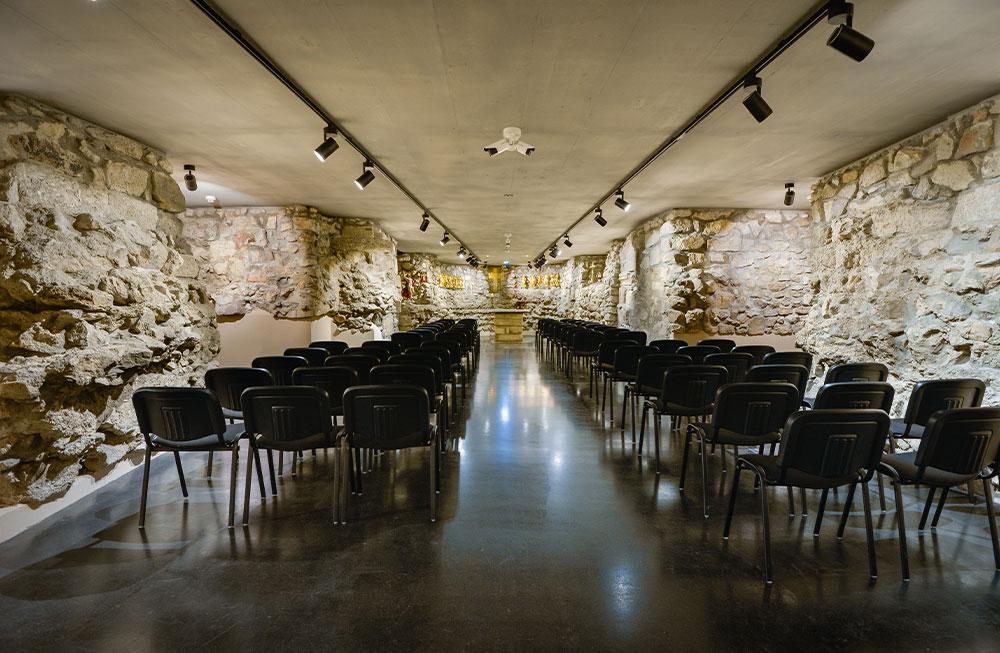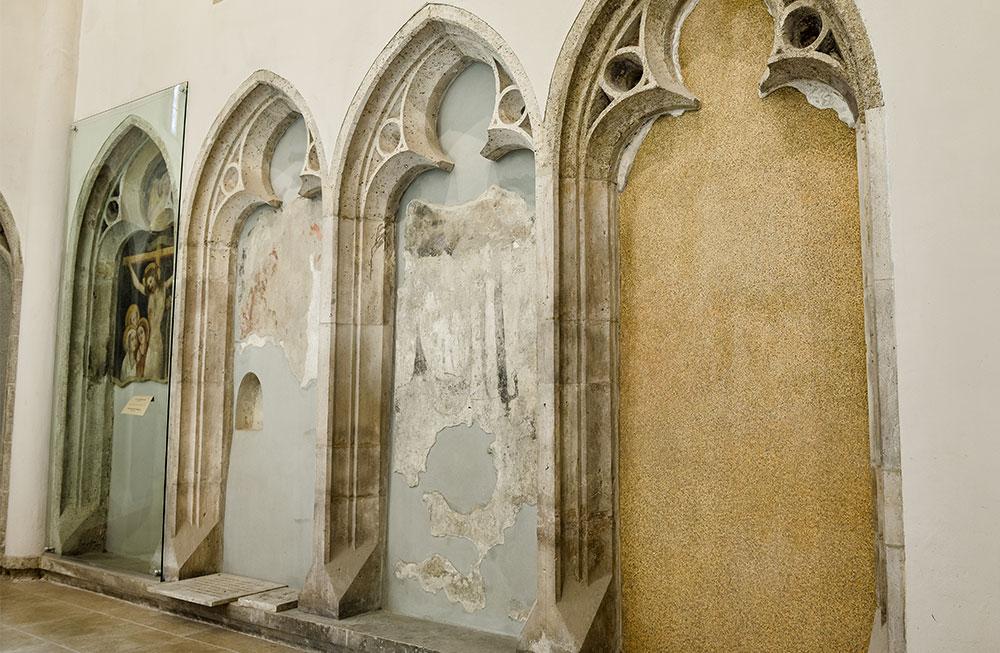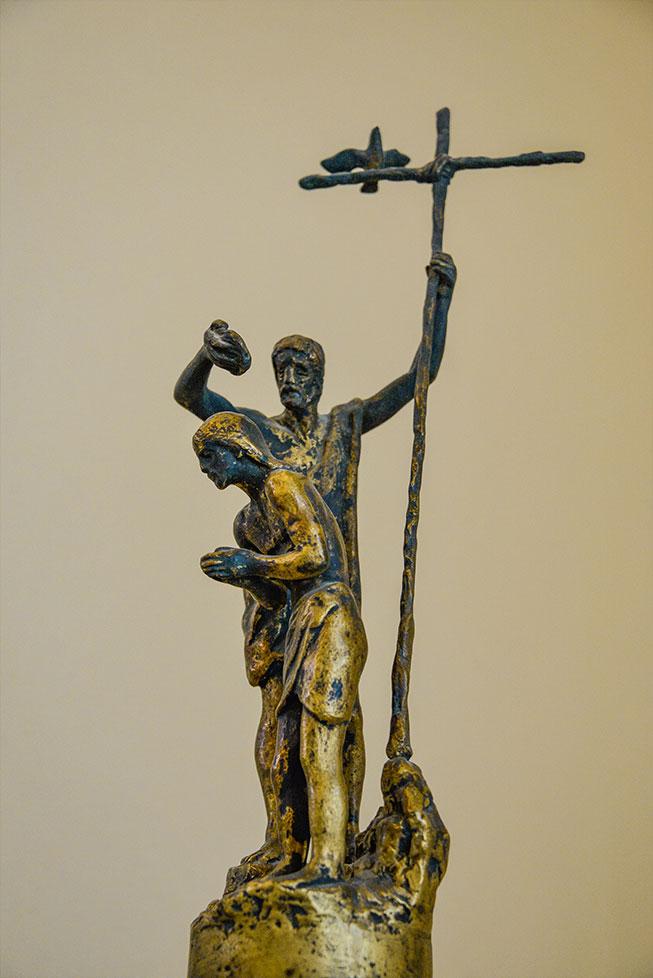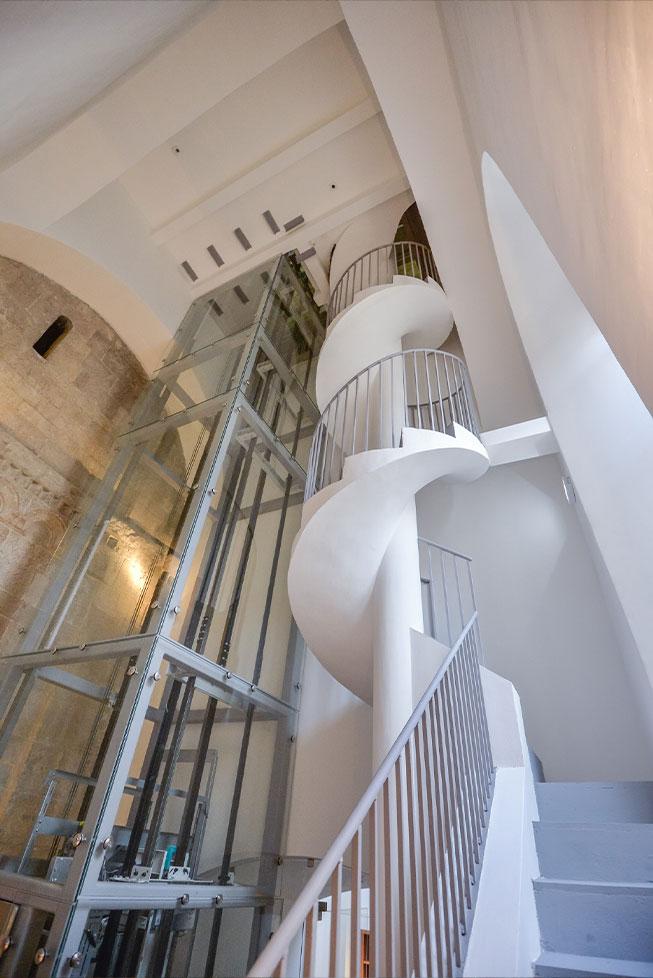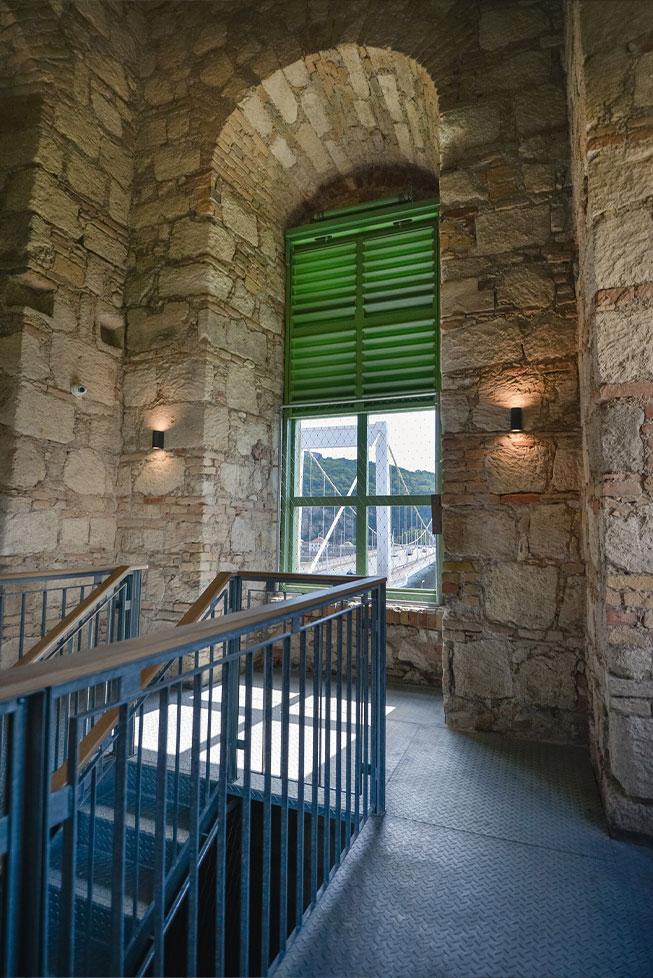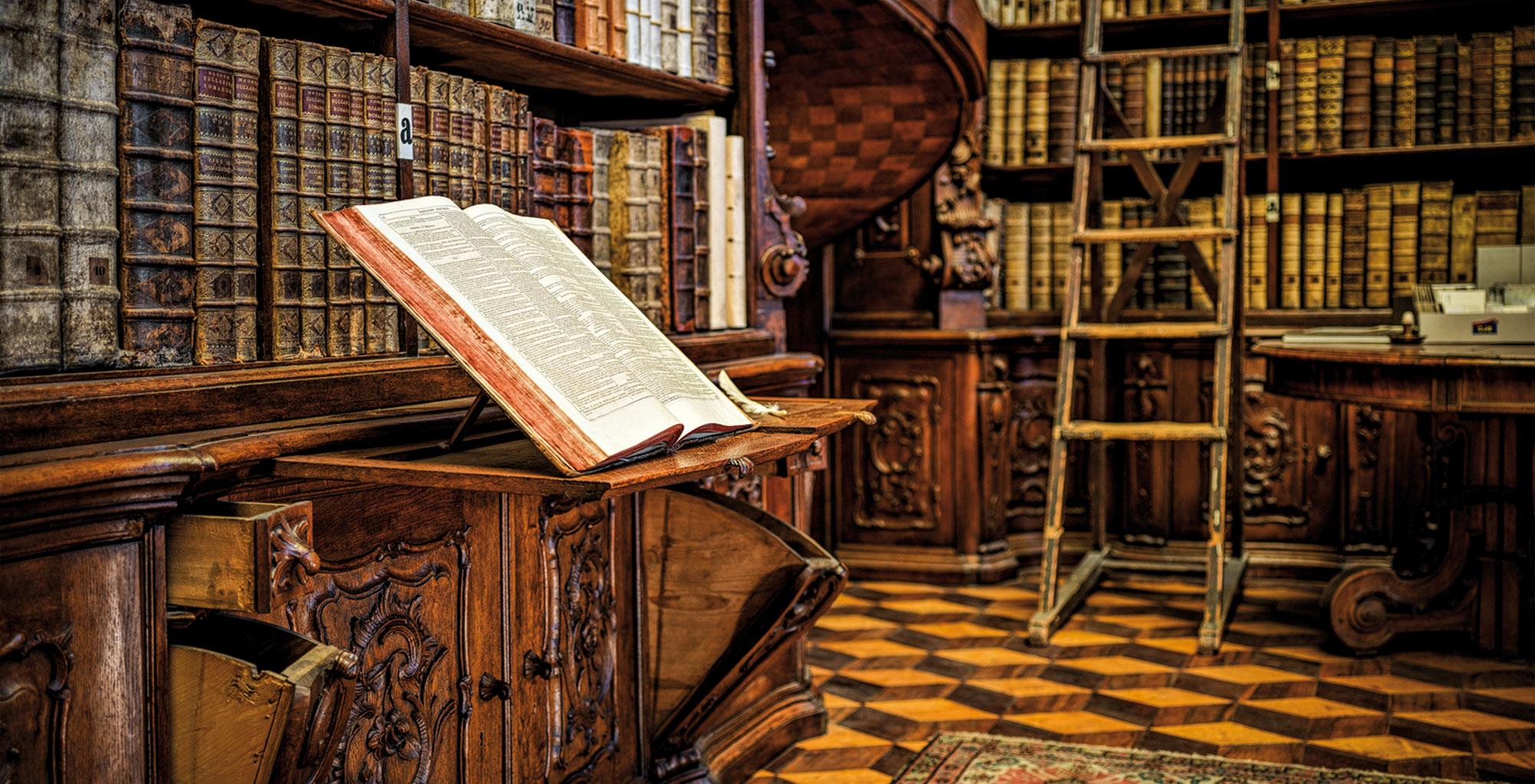On the Pest side of the Elisabeth Bridge stands a church, partly built on the remains of a Roman structure — the Contra-Aquincum military fortress — originally constructed in the 2nd century. The ruins of the fortress can still be seen today on March 15th square. Archaeological excavations carried out between 2014 and 2016 revealed that the commanders' room of the Roman fort lies directly beneath the Inner-City Parish Church. Today, it is visible through a glass floor.
In the 11th and 12th centuries, the stones from the Roman fortress were used to build a Romanesque church. The foundations of this medieval structure can still be viewed in the undercroft of the Inner- City Parish Church, where a small museum showcases artefacts recovered during the excavations, as well as sheet music, missals and an icon of the Madonna of Brno. Here, the church also preserves the so-called Holy Cross relic, donated by Pope Pius XI to the Order of St. Paul in 1934.
After the original cathedral was devastated during the Mongol invasion, it was rebuilt in the 14th century. Initially expanded with Gothic features, it later received Renaissance elements. During the Ottoman occupation, its vast sanctuary was converted into a mosque — a prayer niche facing east still marks this period. In the 18th century, the church gradually took on its present-day appearance, with its two Baroque towers and façade becoming defining features of the Budapest cityscape.
Relics of three Hungarian saints are housed here: in addition to King St. Ladislaus I and St. Elizabeth of the House of Árpád, the main altar contains the heel bone and vertebrae of Bishop St. Gerard (Gellért) of Csanád, whose body, according to legend, was buried here in 1046. One of the church's most precious treasures is the 14th-century fresco of the Madonna on the Throne, found astonishingly intact in 2010 under multiple layers of paint in a niche behind the sanctuary.
Did you know?
In the summer of 2020, the nearly 300-year-old Baroque towers of the Budapest Inner-City Parish Church opened to the public. Accessible by lift, the towers now offer two viewing platforms with panoramic views over the capital.
Download the free ChurchApp Esztergom-Budapest tour guide app and discover our historic churches and sacral collections! You can also use the app to discover the hidden curiosities of the churches on your own. The app and information are available in six languages.





